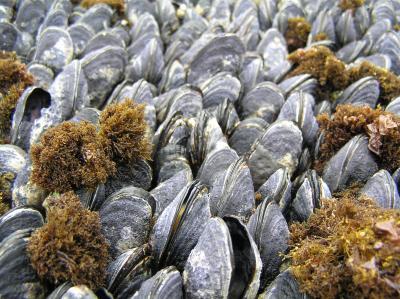The study on oceanic pH change titled "Dynamical Patterns and Ecological Impacts of Declining Ocean pH in a High-Resolution Multi-Year Dataset," was conducted for over eight years off the coast of Washington near the Tatoosh Island. Over 24,500 samples were taken from this location and were used to plot the changing cycle in oceanic acidity levels. The findings are to be published in the Dec. 2 issue of PNAS.
ability to dissolve certain rocks. While HCl is not the reason behind oceanic acidity, the properties of a general acid help to better explain the true cycle behind what is occurring today. When an acid is
mixed in an aqueous solution, the compound ionizes, releasing H+ into the water. The more H+ the lower the pH and the higher the acidity, simple right?
"Of the variables the study examined that are linked to changes in ocean acidity, only atmospheric carbon dioxide exhibited a corresponding steady change," said J. Timothy Wootton, the lead author of the study and Professor of Ecology and Evolution at the University of Chicago.
CO2(aq) is strong enough to dissolve limestone, and produces levels of acidity that could seriously damage the marine ecosystem. Too much CO2 in the ocean could lead to ecological disruption and a mass extinction of marine life in the not too near future.
"Many sea creatures have shells or skeletons made of calcium carbonate, which the acid can dissolve," said Catherine Pfister, Associate Professor of Ecology and Evolution at the University of Chicago and a
co-author of the study. "Therefore, the increased acidity of the ocean could interfere with many critical ocean processes such as coral reef building or shellfish harvesting."

Dead mussels as well as live mussels with open, eroded shells are possible symptoms of stress from declining ocean pH and increasing acidity. (Photo Credit: C.A. Pfister, University of Chicago)
"The acidity increased more than 10 times faster than had been predicted by climate change models and other studies," Wootton said. "This increase will have a severe impact on marine food webs and suggests that ocean acidification may be a more urgent issue than previously thought, at least in some areas of the ocean.
Typically, oceans act as sinks for global climate change by absorbing and reducing the greenhouse gasses, but not only do the recorded higher acidity levels harm marine life, they also reduce the ocean's ability to absorb carbon dioxide. As CO2 levels grow, the ocean loses its buffering ability and the effects of global warming are sure to be more prevalent.
"Atmospheric carbon dioxide concentrations will continue to increase, and our work points to the urgent need to better understand the ocean pH changes that this is likely to drive as well as how these changes will affect marine life," said Pfister.





Comments